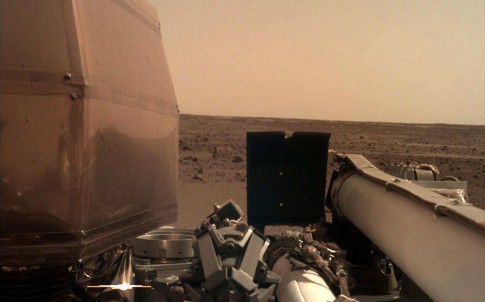NASA’s InSight robot lands safely on Mars and deploys solar panels
NASA’s InSight (Interior Exploration using Seismic Investigations, Geodesy and Heat Transport) lander has arrived safely on the Martian surface after a seven-month journey.

Having launched from Vandenberg Air Force Base in California in early May, the lander touched down on Mars on Monday, November 26, with a signal relayed back to Earth confirming the landing at around 2000 GMT. Another signal at around 0130 GMT indicated that the lander’s solar array had been successfully deployed.
InSight’s landing zone is a flat area of cooled lava near the Martian equator called Elysium Planitia. The robot’s two-year mission will see it drill down into the surface of the red planet to investigate how rocky planets – including Earth - and moons are formed. InSight carries three instruments designed and built in the UK as part of its seismic package. These microseismometer sensors were developed by Imperial College London and integrated with electronics built by the University of Oxford. Over the course of the two-year mission, scientists expect to detect anywhere between a dozen and a hundred tremors up to 6.0 on the Richter scale using this equipment.
Register now to continue reading
Thanks for visiting The Engineer. You’ve now reached your monthly limit of news stories. Register for free to unlock unlimited access to all of our news coverage, as well as premium content including opinion, in-depth features and special reports.
Benefits of registering
-
In-depth insights and coverage of key emerging trends
-
Unrestricted access to special reports throughout the year
-
Daily technology news delivered straight to your inbox










Water Sector Talent Exodus Could Cripple The Sector
My local water company is Severn Trent which has a market capitalisation of £8.2 billion, made a pre-tax profit of £200 million in 2024 and is paying...